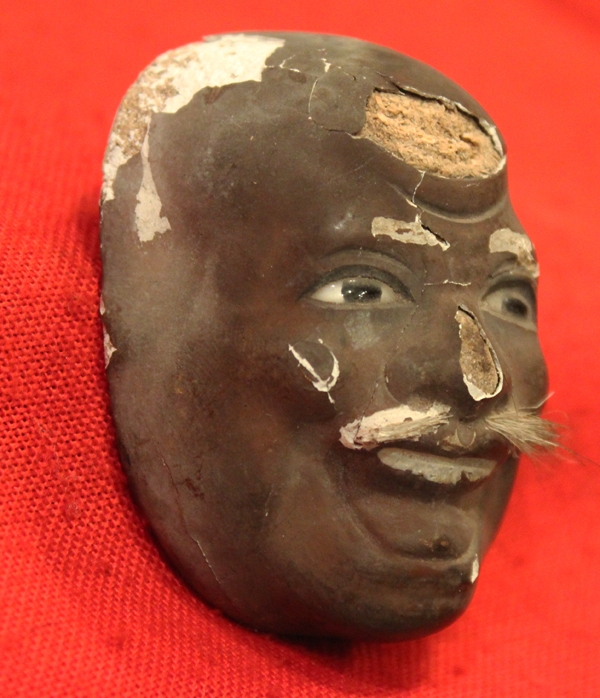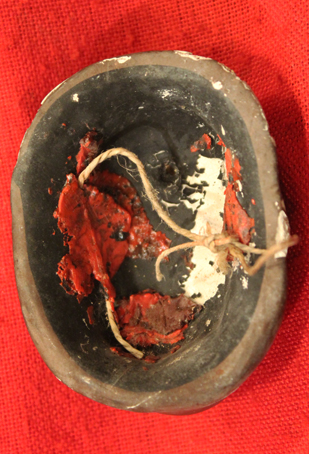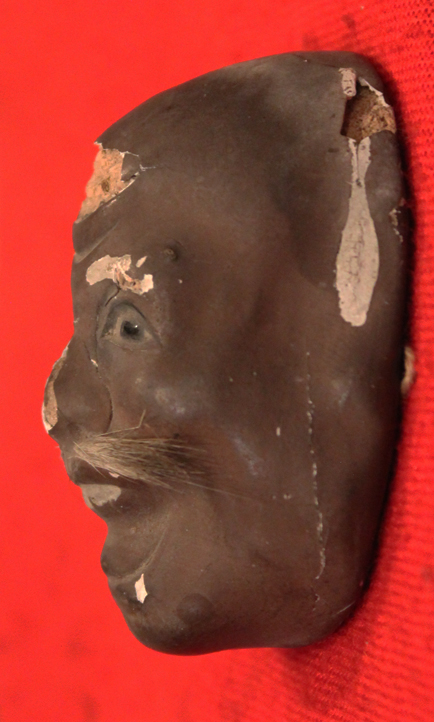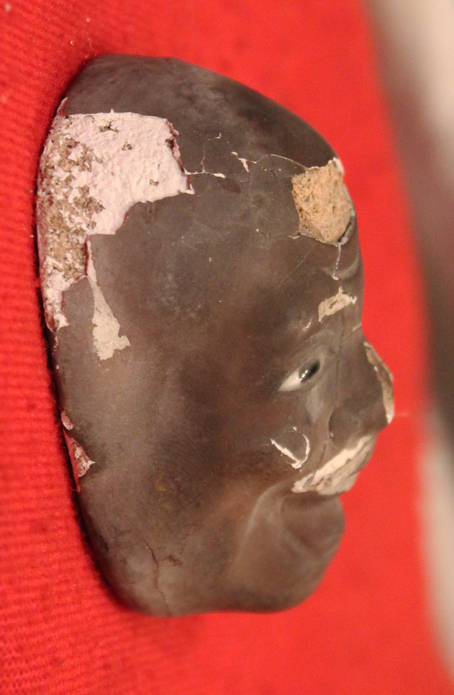An Antque Edo Period Men-Netsuke of a Noh Mask for Sagemono
Likely an inro netsuke. men-netsuke or "mask netsuke" - These were imitations of full-size noh masks and share characteristics in common with both katabori and manju/kagamibuta. Face of a Jo an old man with moustach and glass eyes. From the ancient Japanese tradition of mask drama that can trace its origins to the Bugaku Imperial Court dancing of the 9th century. Noh is the classical theatre of Japan which was codified in the 14th century under the father and son actors Kan'ami and Zeami under the patronage of the Shogun (supreme military leader) Ashikaga Yoshimitsu. The performances utilise masks and elaborate costume. Netsuke, like the inro and ojime, evolved over time from being strictly utilitarian into objects of great artistic merit and an expression of extraordinary craftsmanship. Such objects have a long history reflecting the important aspects of Japanese folklore and life. Netsuke production was most popular during the Edo period in Japan, around 1615-1868. Today, the art lives on, and some modern works can command high prices in the UK, Europe, the USA, Japan and elsewhere.
Okimono, small and purely decorative sculptures, were often made by the same artists who produced netsuke.
Probably 18th century. 2.25 x 1.75 inches. Its condition is not good, and quite worn, but it is thus priced accordingly, however, it is a very scarce example so still most collectable.
Code: 20899
165.00 GBP





